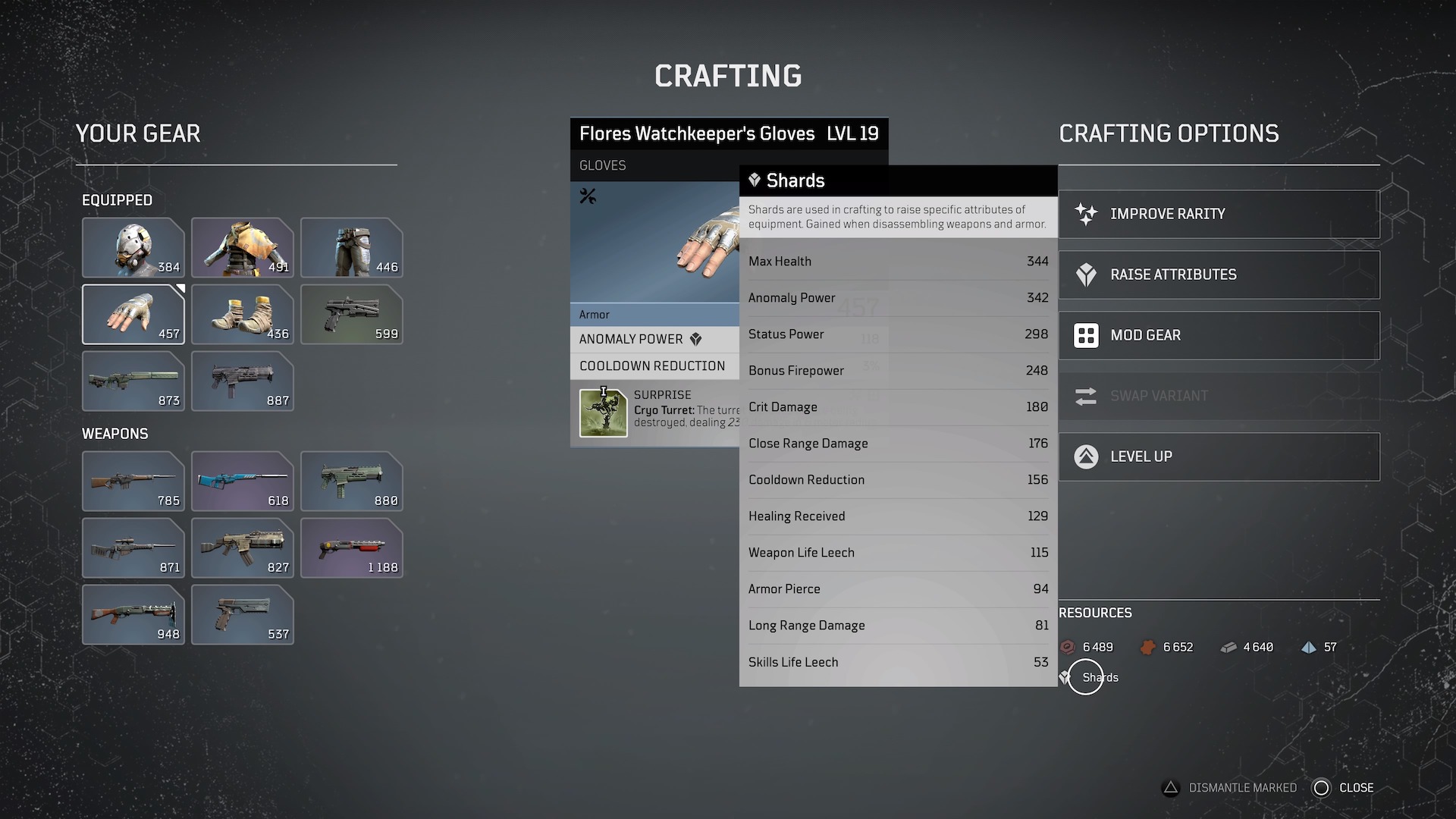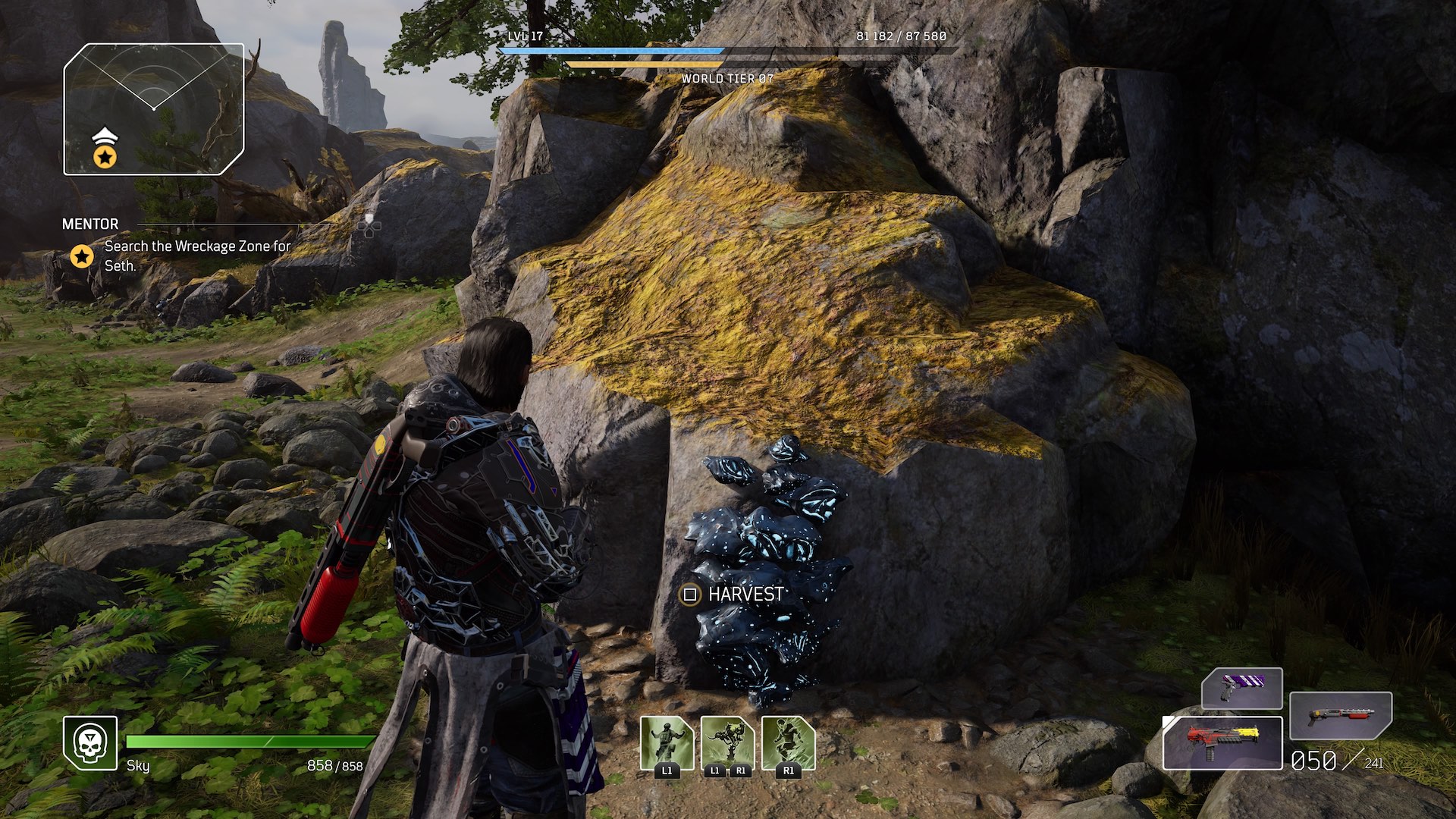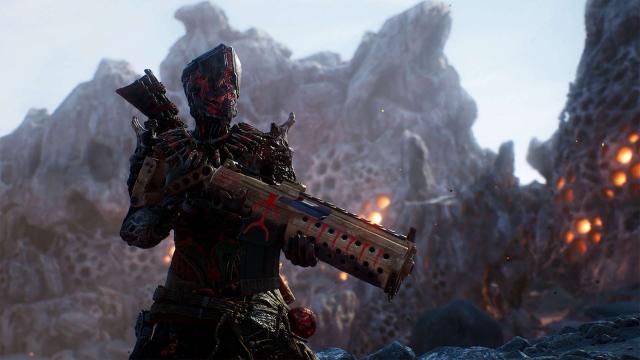At first glance, Outriders might look like a game you’ve played one thousand times: a sci-fi third-person shooter in which you shoot stuff to get better gear in order to shoot more stuff. But there are plenty of quirks, making this loot-shooter more complex than you might think. Since the game’s early-April launch, a few of us at Kotaku have spent a whole lot of time with it. The following advice should help you get started on your journey through Enoch.
Dying will cut into your World Tier experience.
Outriders features two experience bars. The first, your character progression, functions the standard way: Kill enemies and complete missions and it goes up. Along the way, you’ll earn skill points and periodically unlock new abilities.
Your World Tier, meanwhile, dictates the game’s difficulty. There are 15 levels, each of which buffs your enemies. In turn, jumping up a World Tier increases the drop rate of rare or legendary gear, and allows you to equip higher-leveled weapons and armour. So it’s a bit of tradeoff.
Every time you die you’ll take a small hit to your World Tier experience. You won’t, however, go down in World Tier. So, for instance, if you die at the very start of World Tier 7, you won’t get dropped to World Tier 6. You’ll just probably drop your World Tier progression down to 0 experience points. (By the way: When you try to leave a battle that’s already started, you’ll trigger a 10-second countdown, urging you to return to the fray. If that hits 0 it counts as a death and will sap your World Tier experience as a result.)
Don’t forget to claim your World Tier rewards.
Every time you unlock a new World Tier you’ll earn a sweet reward, but you won’t get it automatically. You’ll have to open up the World Tier menu (the Options button, on PS5) and claim it manually. More often than not, you’ll get a weapon better than anything else in your inventory, at least for a level or so.
Don’t sell your gear. Dismantle it.
Selling gear will give you a decent chunk of scrap, the game’s main currency. You can use scrap to buy weapons and armour from vendors at the various social hubs, but there’s little reason to do so, at least in the early- and mid-game. You’ll find new gear at such a rapid clip that anything you buy will just get swapped out in half an hour anyway.

Dismantling gear, on the other hand, will give you valuable resources that are essential for the game’s robust crafting system. Generally, breaking down guns gives you iron, while armour will break down into leather. Better yet, you can also earn shards for specific attributes from a dozen categories like max health, crit damage, and cooldown reduction, which can then be used to boost those attributes on other pieces of gear. Finally, if you’re dismantling a piece of gear equipped with a mod that’s not part of your mod library, you’ll store that mod away for future use — without limits. Constantly dismantling your gear means you’ll rarely, if ever, find yourself scarce on the resources necessary for modding (more on that in a sec).
You’ll get scrap as you play anyway.
You can dismantle everything of a certain rarity.
In your inventory, just check off the colour-coded boxes on the lower right-hand corner.
Mod! Mod! Mod!
Partway through the First City segment — that’s the game’s third major plot point — you’ll open up the ability to mod your weapons and armour. Full stop: Modding is just about the single most important thing you can do in Outriders.
Outriders, at its core, is a luck-based loot game. But thanks to modding, you can sidestep the uncaring proclivities of random number generation. You can swap out mods that change how gear behaves. You can switch up the fire mode of any weapon: If, say, you’d prefer your automatic sniper rifle fired single bullets, you can change that. You can make it so your SMG shoots burst fire rather than fully auto, or that your shotgun fires in a spread rather than a slug. And if you love — really love — any weapons, you can level them up to keep them on parity with your character’s progression.
Some words of caution:
- Once a mod is in your compendium, it’s in your compendium for good. (There’s a strategy of sorts in choosing your post-mission loot by the mods you can add to your library from deleting gear, rather than the immediate stat boost you’d get by equipping it.)
- You can’t reap double benefits by equipping the same armour mod twice, so don’t bother doubling up.
- For gear with two slots, you’ll only be able to swap out the mod in one slot. You can change up the mod in there as many times as you’d like, but the other slot will remain locked for good.
Learn the mod shorthand.
There are a handful of indicators regarding mods that Outriders doesn’t really do a great job at explaining.
- A little waffle symbol means you already have that mod in your library.
- A small wrench icon means you’ve previously modded that piece of gear.
- Two red squares means you already have that mod equipped on a piece of armour, meaning you wouldn’t get any extra benefits.
You can share mods between characters — kind of.
On paper, you can’t share mods between characters. Doesn’t mean there isn’t a workaround. Let’s say you want your Pyromancer to have the “soul devourer” mod, but you’ve yet to track it down. Meanwhile, your Devastator character is awash in weapons equipped with it. By dropping one of those guns in your stash, your Pyromancer can then take it out, dismantle it, and add the mod to their library. (Obviously, this trick is better suited for weapon mods, which can work across classes, than it is for armour mods, which tend to be restricted by class.)
Accolade progression is shared among all of your characters.
But you’ll have to customise your truck and banner for each one.
Remember to auto-loot.
By pressing down on the d-pad, you’ll automatically loot every piece of equipment dropped by enemies in a certain area. Be sure to do so before you move on to the next area. It’ll save you the time and energy of manually picking everything up, and if you don’t grab that stuff, you won’t be able to come back for it. You can designate a threshold so you only pick up gear at a certain inventory tier or higher, but there’s little reason not to pick up everything because, again, resources are key.

(Note: This feature does not automatically loot any chests in the area; you’ll have to find and open those the old-fashioned way. But if a co-op partner opens a chest on the other side of the battlefield, you can auto-loot the gear without trudging all the way to their position.)
Don’t skip the hunts.
Shortly after you make it to the very literally named Trench Town, you’ll be able to hunt bounties (tough human enemies) and monsters (kaiju-sized versions of rank-and-file creatures). These hunts will send you to regions you’ve already traversed — sometimes to battlefields you’ve previously cleared, sometimes to new ones — but you can also pick them up as you venture beyond Trench Town. Just keep an eye out for wanted posters (bounties) and bloody carcasses (monster hunts) to add these quests to your log. When you cash them in back at the saloon in Trench Town, you’ll get an epic piece of loot for your troubles.
Spam your abilities.
Compared to certain other games that grant you space-magic abilities, the abilities in Outriders recharge in a blink. Make the most of that. Use your abilities constantly. Not only are they a blast — they’re what make Outriders stand out among a crowd of ostensibly similar third-person shooters — but they’ll also get you out of a tight spot far more frequently than your weapons will. In Outriders you heal by dishing out damage, which then restores a percentage of that damage as health. Your abilities tend to hurt your enemies a lot more than your guns will. You do the maths.
Try out the ammo-altering abilities.
They’re not as sexy as the turrets and time-knives and tornadoes of fire, but the abilities that change how your ammo performs are among the best in the game. For instance, the Technomancer’s Blighted Rounds will poison anyone you shoot; afflicted enemies will, in turn, poison anyone near them. The Trickster, meanwhile, can use a move called Twisted Rounds, which increases the power of every bullet you fire. You can imagine how effectively that compounds with, say, an SMG or LMG. (In the first patch for Outriders, scheduled for next week, People Can Fly plans on increasing the cooldown of Twisted Rounds because it’s just that damn good.)
Give all of the classes a try.
After you finish the prologue once, you can create a fresh character from the start of chapter one, also known as “where the game gets good.” Replaying the same area might sound tedious, but it can fly by, particularly if you skip the cutscenes. (Skip them by pressing Circle or B.) Plus, all four classes are so distinct that fights you’ve played through previously feel totally different when you run through with a different class. I’d like to say you’ll get a good handle on what class might fit your playstyle by the end of the Eagle Peaks region, but hell, I’m well past that point with three characters and still haven’t settled on a main. Guess I’ll just have to play this game a lot more then. Oh well!
.

Leave a Reply